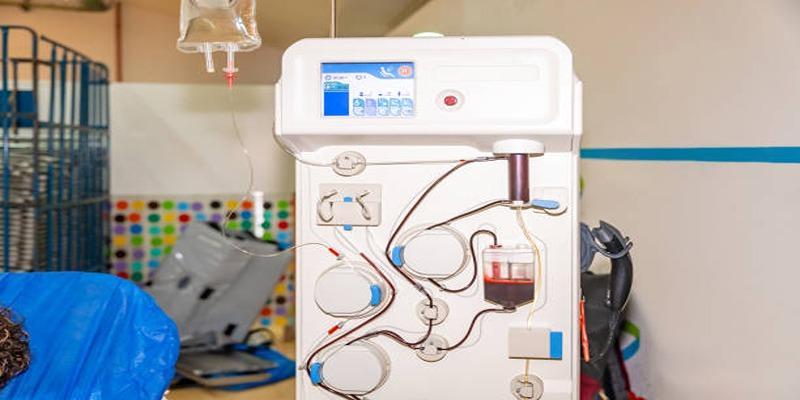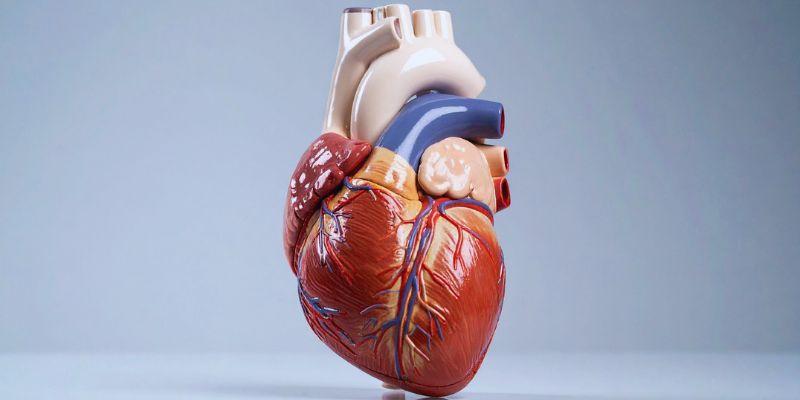The field of cancer treatment has also taken a different dimension moving beyond the conventional to a more personalised treatment option. Photopheresis is an exciting treatment based on the light and the immune system to treat some cancers especially to those which affect the immune system and blood. The ability to know the mechanism behind this new treatment method can help patients and families enlighten their choices on what to do concerning treatment.
Photopheresis, or extracorporeal photopheresis (ECP) is a special medical treatment in which the body immune system is combined with light therapy to treat a number of diseases such as some cancers. The treatment process consists in withdrawal of blood of a patient, treatment of blood with light-sensitive medications and ultraviolet A (UVA) and returning blood cells with the changed properties to the body.
It works by stimulating the body of the patient to attack elements of abnormal cells much more effectively. When blood cells are exposed to UVA light along with the photosensitizing agent psoralen, changes occur to the blood cells making them more identifiable to the immune system as disease or foreign.

The toolbox of photopheresis works in the following ways:
In a procedure, a photopheresis, blood is extracted out of the patient into a specialized machine that isolates distinct parts of the blood. The white blood cells including the cancerous and the healthy immune cells are separated to be treated.
The white blood cells are isolated and combined with psoralen which is a naturally occurring compound which causes sensitivity to light. This is then targeted under a limited dose of UVA lights that leads to the activation of the psoralen which then binds with DNA of the cells.
Once the treated cells are reinserted into the body of the patient, the immune system reacts in that they believe they have been tampered with and, consequently, start to attack them. This system in effect trains the immune system to recognize and kill similar aberrant cells in the body, generating a specific anti-cancer potent effect.
Photospheresis has been demonstrated to especially benefit certain cancers and immune disorders that are blood related:
Such treatment has been the most effective in the treatment of cutaneous T-cell lymphoma (CTCL) which is a common type of cancer that affects T-lymphocyte and more or less appears in the skin. Photopheresis therapy enhanced marked improvement in the patients with the advanced cases of CTCL.
Although it is not cancer, graft-versus-host disease (GVHD) may associate with cancer patients who have undergone a bone marrow transplant. Photopheresis has found its application in the treatment of both acute and chronic manifestations of GVHD and has reduced the symptoms of this condition and alleviated the lives of patients.
Studies are underway on photopheresis and other blood-associated cancers such as some forms of leukemia and lymphoma. Initial research indicates that it may have benefits, but further research is required to come up with conclusive guidelines.
Knowing what to expect when undergoing photopheresis treatment can aid the preparation process patients undergo when planning their procedures and manage their expectations with.
Patients are thoroughly examined before going into photopheresis by taking blood tests, imaging tests and examining their general health conditions. This assists in knowing whether photopheresis is suitable and safe to use into the individual patient.
Photopheresis is usually done in several dosages, usually run on the same two days of the month. Treatment frequency and duration varies, depending on the condition being treated, and how well a patient responds to the therapy.
The average length of one photopheresis session is 3-4 hours. During the period the machine can process the patient blood they can read, watch the television, and perform other silent activities.
Photopheresis has some great benefits concerning the traditional cancer treatment methods
Unlike radiation or chemotherapy, photopheresis normally causes minimal side effects. Fatigue or transient alterations in blood pressure occur in most patients who undergo treatment, and they are moderate or mild.
The treatment, through directly affecting only abnormal cells, leads to a reduction of the risk of the secondary infections and other tones of the conventional approaches on cancer treatment which is likely to arise.
Photopheresis out-patient procedures do not interfere with the routine life of the patient and reduce its effect on the patient.
Most patients attain prolonged remission following the completion of treatment with photopheresis treatment with some patients developing cancer free years after their final treatment.
Although photopheresis has been a great addition to the cancer treatment process, it should be noted that it has limitations:

In the therapy of photopheresis, there is still more research to look forward to emerging in the area whereby new uses and enhancements are being discovered:
Photopheresis is a break through in personalized individual cancer care, giving new hope to individuals to whom traditional treatment has been ineffective. This innovative treatment is changing cancer support by the power of harnessing the immune system. Before patients undergo photopheresis, they are advised to seek advice with experienced oncology teams to know whether it will suit them or to devise specific strategies. This is a representative example of the move towards interventions that use the natural defenses of the body, to effect better results.
 TOP
TOP
If you still believe that women don’t get heart diseases or that only older people can have heart diseases, you are wrong
 TOP
TOP
How building wealth is possible at any age with practical strategies that focus on consistent habits, smart choices, and long-term thinking
 TOP
TOP
Start making the most of your 401(k) today and secure a stronger financial future. Learn how timing, employer matches, and smart contributions can improve your retirement
 TOP
TOP
How financial aid for college works—from grants and scholarships to loans and work-study programs. Get clear, practical guidance for every funding option
 TOP
TOP
Discover 5 unique horse races that take place around the world, blending speed, thrill, and stunning cultural locations.
 TOP
TOP
Discover how Easter is celebrated across countries, from egg rolling to water fights, offering joy through local traditions.
 TOP
TOP
Explore North Wales’ most breathtaking gardens, from serene floral paths to hillside greenery with sea views.
 TOP
TOP
Wondering if it’s the right time for a loan? Learn how rates, timing, and your finances impact the decision.
 TOP
TOP
Discover the top reasons to pay credit card bills on time and how it safeguards your credit, money, and peace of mind.
 TOP
TOP
Uncover the best experiences in Rome, Italy, with this essential guide. Walk through ancient ruins, explore piazzas, visit historic churches, and get to know the Eternal City at your own pace
 TOP
TOP
Discover the best places to stay in Nashville, from lively downtown hotels to charming neighborhood rentals. Explore top areas suited for music lovers, families, and anyone seeking the perfect Nashville experience
 TOP
TOP
Thinking about a lease buyout? Learn how to evaluate your options, compare costs, and decide whether keeping your vehicle is the right move. Understand the financial side before making your next step